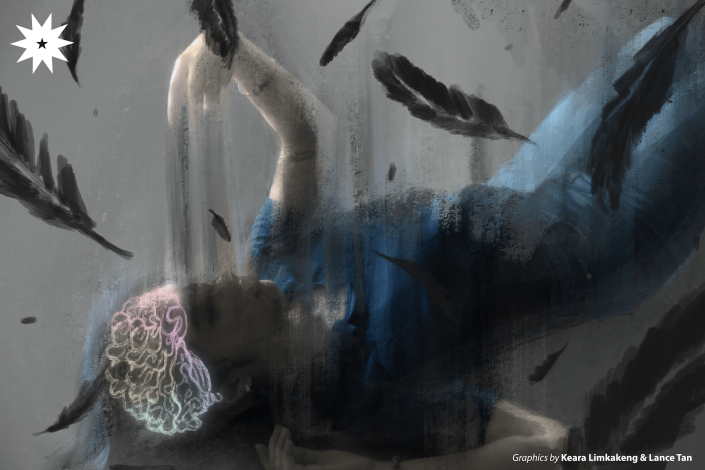The lore between most—if not all—religions is that departed souls must go somewhere. While physical records of this realm are unbeknown, some victims of near-death experiences have claimed to have a glimpse of the beyond. Despite its peculiarity, could these visions solidify the existence of the “other side of the fence” or are they merely cerebral illusions based on our beliefs and biases?

Ineffable
Near-death experiences are pivotal events many people have when they are close to death or pronounced dead. The concept embraces elements of darkness followed by the cessation of pain, the light at the end of the tunnel, and finally, a sense of overwhelming peace. “People, who after a coma, cardiac arrest, or other [life-threatening cases] would have these intense, vivid memories of the event despite looking unconscious from the outside,” preludes Dr. Steven Laureys, a clinical professor at the Belgian National Fund of Scientific Research.
Before a person is pronounced dead, cerebral activity in their brain reaches its peak until it ceases, resulting in brain death. But even so, how does one go about experiencing visions and heightened senses? “It’s not a false memory,” Laureys adds. This unexplained phenomenon causes people to change the way they perceive life; common reports include loss of the fear of death and a heightened belief in the afterlife, sense of purpose, and perennial gratitude for everything.
“This could be proof of subjective experience independent of brain activity,” Laureys posits, adding that the perception of the visions of those who come back from the afterlife is aligned with their personal, social, cultural, and religious belief system. However, the fact that most people have reported similar experiences suggests that people’s brains react in parallel with others close to death or even those who actually died.
Ajmal Zemmar, a neurosurgeon at the University of Louisville, mentions that our brains may be playing the last few important life events before death. Ending on a good note, he adds that even if our loved ones died a physically painful death, their brains distracted them from pain by “replaying some of the nicest moments they experienced in their lives.”
Outside looking in
Though studying near-death experiences has been notoriously difficult due to ethical reasons, there is evidence that suggests the areas of the brain that are responsible for well-being and memory are activated during these moments. These have been identified by scanning the brain of participants who recall near-death experiences for scars or abnormalities. The specific areas of interest include the limbic structures, temporal pole, anterior cingulate cortex, and hippocampus.
However, Laureys also mentions that the right temporal parietal area—a part associated with non-verbal memory—may also be involved in out-of-body experiences. He says, “there’s evidence that if you stimulate the right temporal parietal area, you can provoke these out-of-body experiences for the notion of light and tunnel vision.”
He also notes that neurotransmitter levels may be altered due to near-death experiences, particularly dopamine, serotonin, acetylcholine, and norepinephrine. However, the phenomenon remains challenging to study.
With hallucinations being a common feature in near-death experiences, scientists have utilized reports from people explaining the sensations they experienced when using certain psychedelic drugs. Laureys has found that ketamine use produces experiences similar to classical near-death experiences. This has implications for research, as ketamine may be usable in testing certain hypotheses related to near-death experiences.
Though there are parallel experiments like this, there is still much to be explored about the biochemical mechanisms of near-death experiences.
Into the light
In addition to all ties to physiology and chemistry, Laureys believes that gaining a full grasp of the science of near-death experiences would also require a complete understanding of consciousness, thought, perception, and emotion. For as long as this understanding has not yet been achieved, he says, it is important to remain careful and open-minded.
This is why he acknowledges the spiritual and mystical qualities of near-death experiences. “For many, it (near-death experiences) is being interpreted as something that has religious significance but not necessarily, so it depends on your definition of mystical and spiritual. [Still], I would definitely say that these are fascinating realities experienced by people,” he opines.
Thus, the challenge for scientists is how to use objective measures to make sense of these experiences and come up with a mechanistic explanation. Laureys suggests that progress may be found in looking beyond our point of view as humans. Research into consciousness frequently takes on an anthropomorphic point of view, but there is no biological reason for other animals not to have a capacity for consciousness—they simply cannot share their experiences with humans.
He concludes, “We should broaden our view and not just look at this from our own limited perspective. [Regarding comas], we made the historical mistake of thinking that if there is no response, there can’t be any conscious thought, and we now know that is not true.”
Science continues to study the light at the end of the tunnel, but there is no need for this research to be at odds with belief. Multiple perspectives may be the very thing needed to see this light for what it is—and perhaps even see what lies beyond it.
